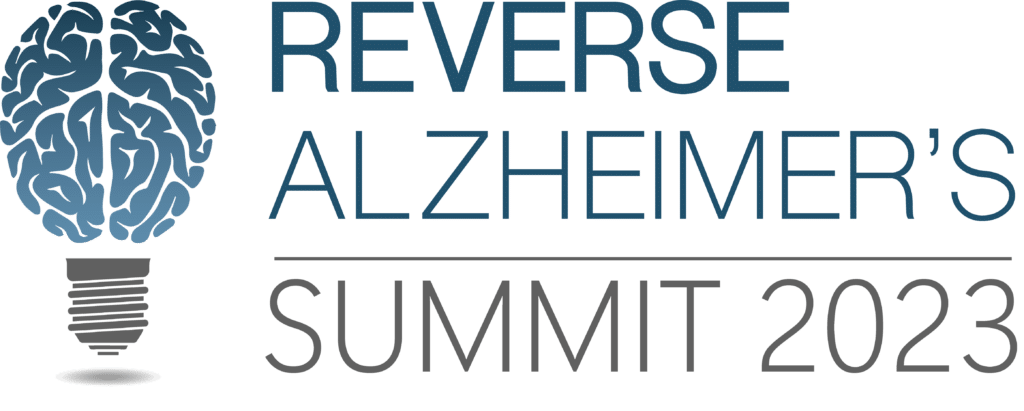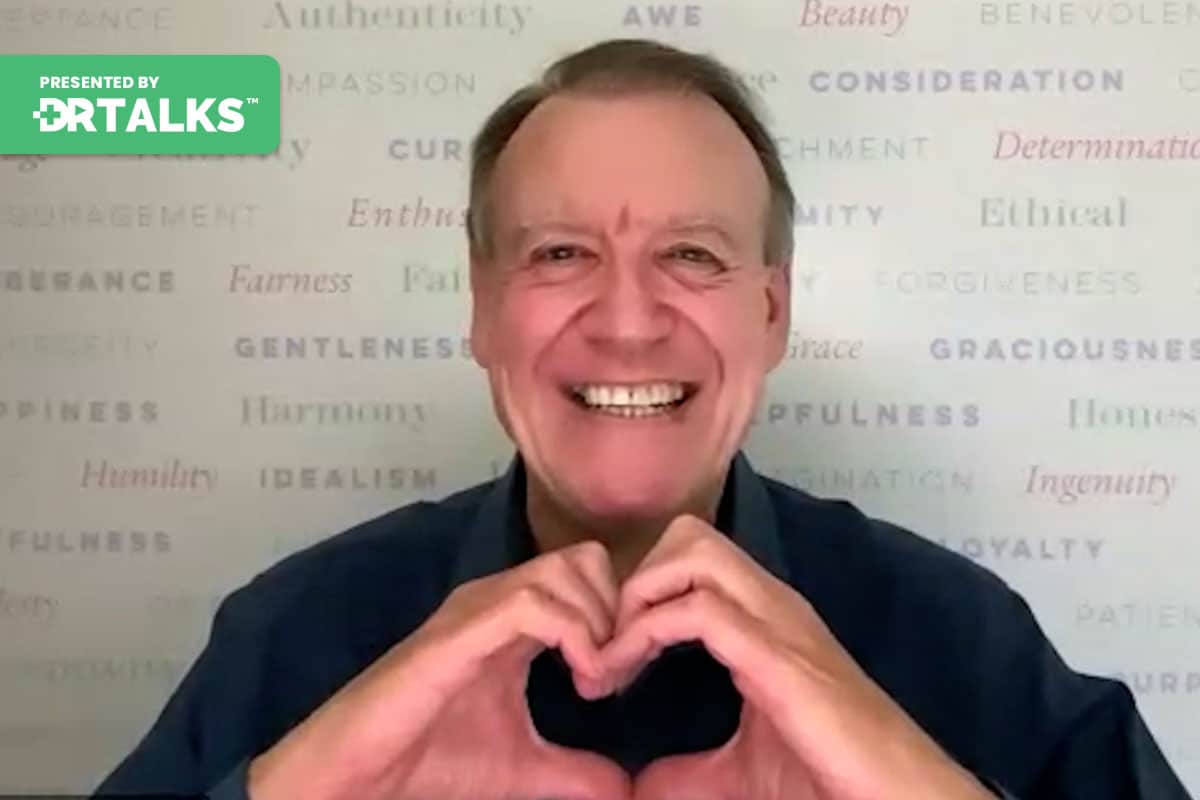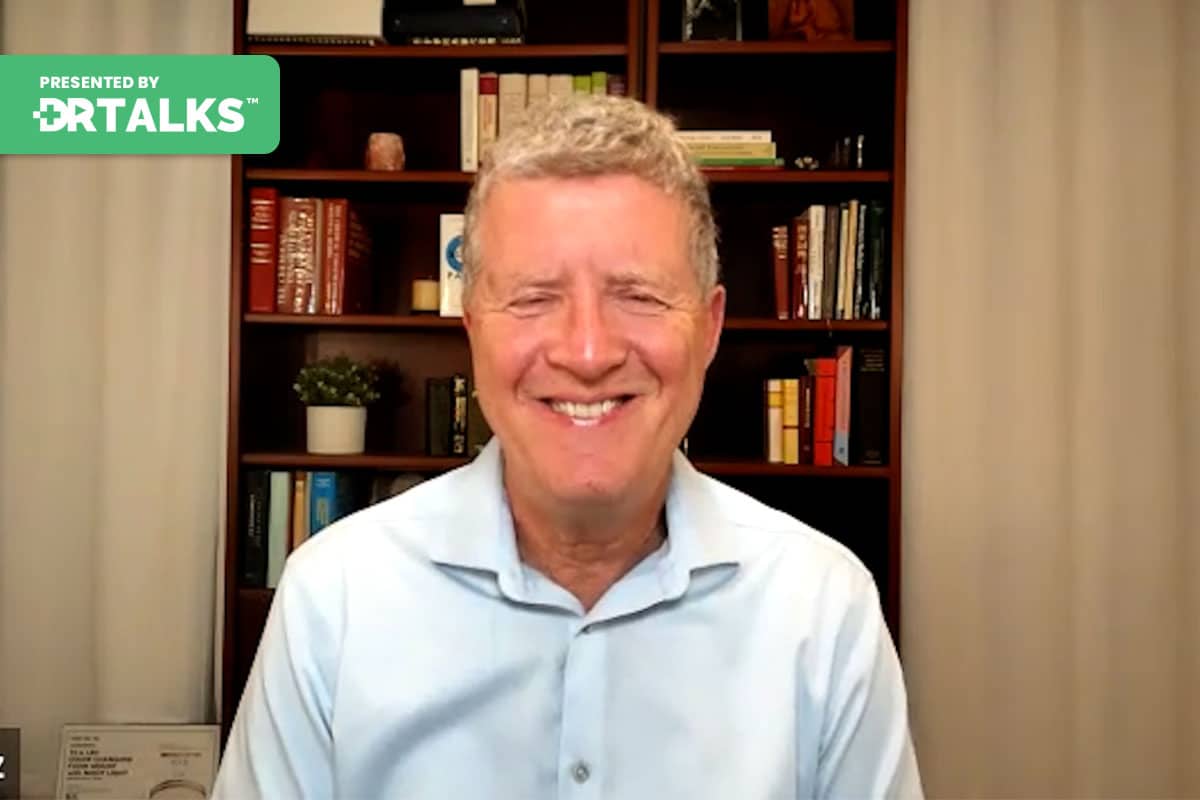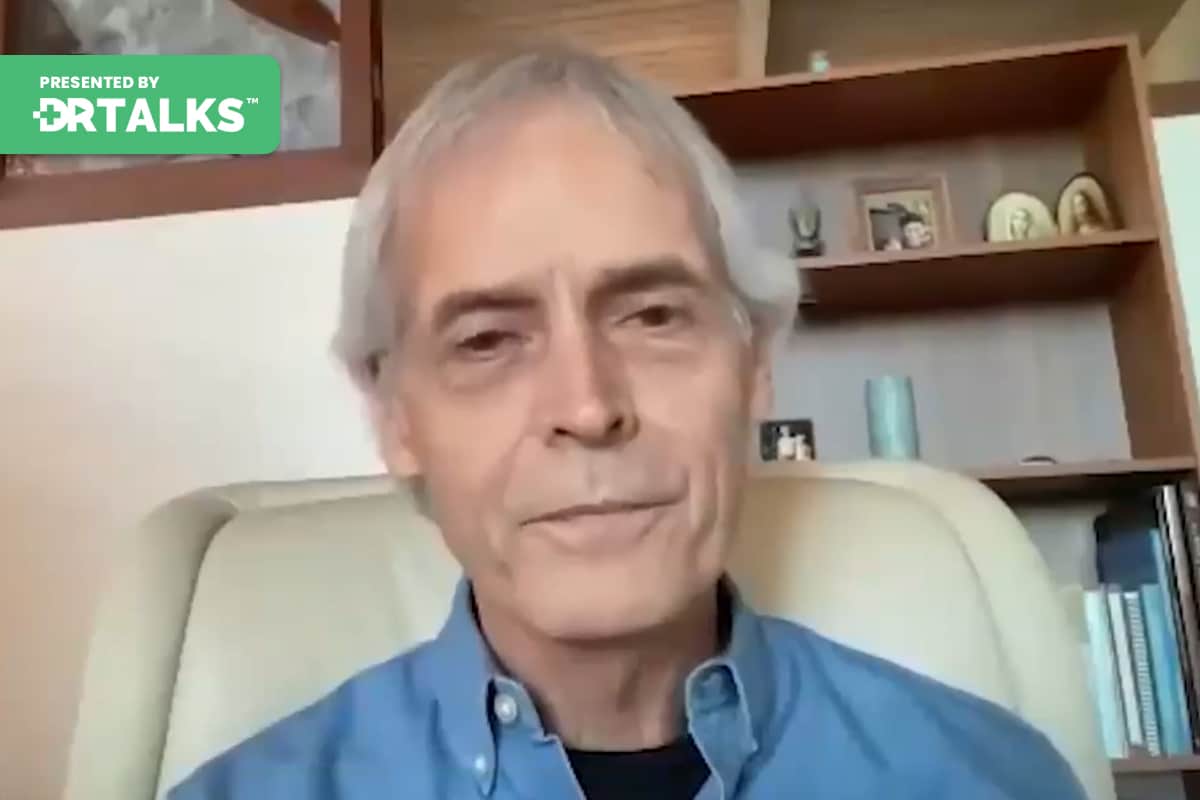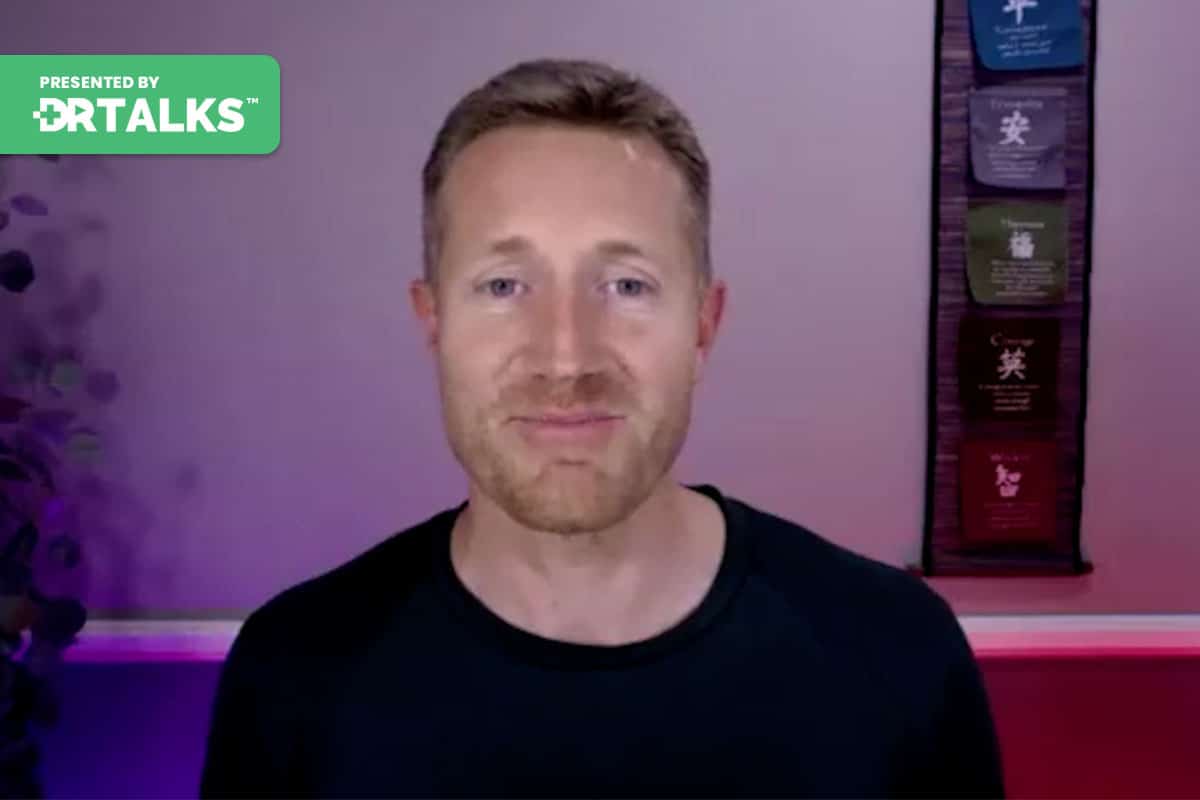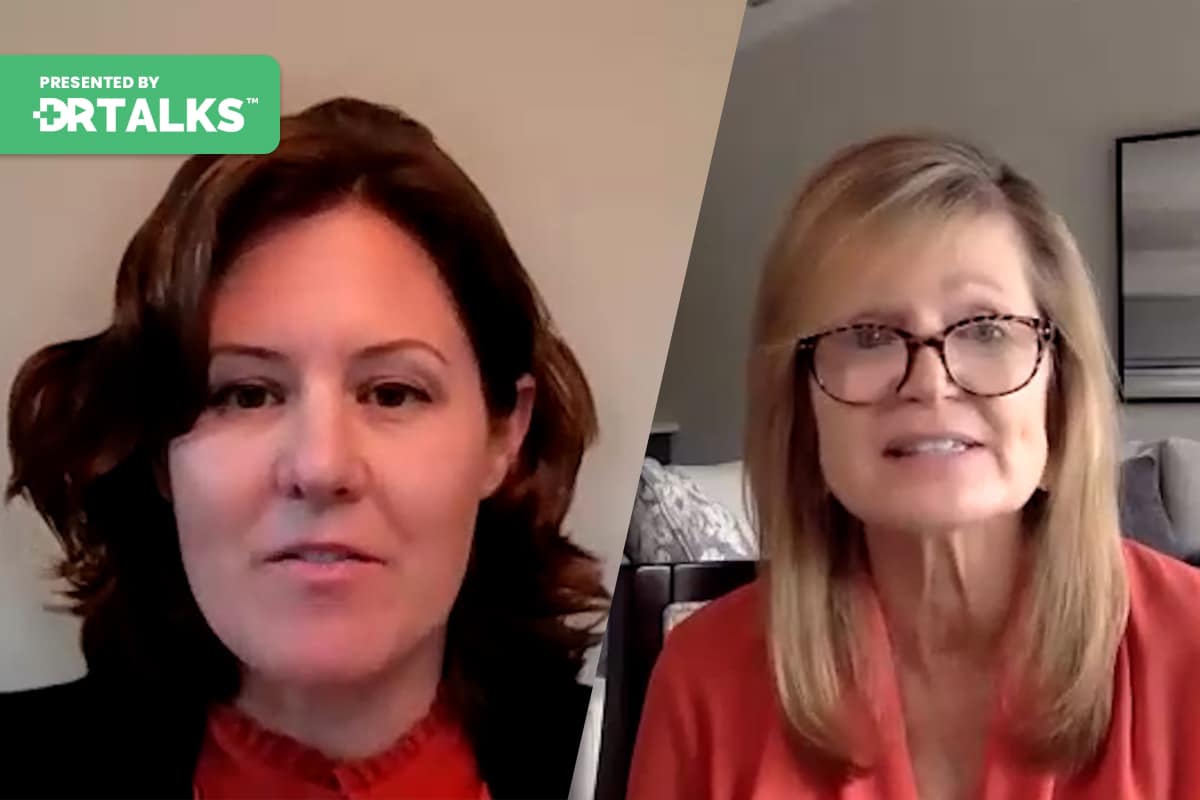Join the discussion below

Dr. Heather Sandison is the founder of Solcere Health Clinic and Marama, the first residential care facility for the elderly of its kind. At Solcere, Dr. Sandison and her team of doctors and health coaches focus primarily on supporting patients looking to optimize cognitive function, prevent mental decline, and reverse... Read More
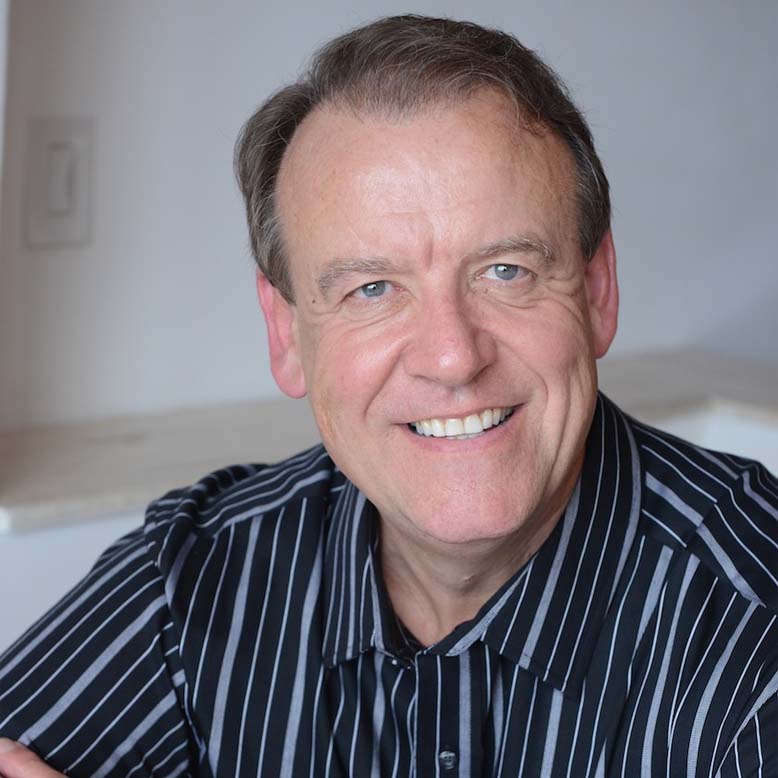
Dawson Church, PhD, is an award-winning science writer with three best-selling books to his credit. The Genie in Your Genes (YourGeniusGene.com) was the first book to demonstrate that emotions drive gene expression. Mind to Matter, (MindToMatter.com) showed that the brain creates much of what we think of as “objective reality.”... Read More
Dr. Dawson Church describes the incredible benefits of meditation for brain health
- Learn about the Emotional Freedom Technique for reducing stress from PTSD and caregiving
- Explore how to rewire your brain for bliss and joy
Related Topics
Alternative Medicine, Alzheimers, Brain, Brain Health, Energy, Meditation, Meditation Techniques, Mind, Mindfulness, NeuroscienceHeather Sandison, ND
Welcome to this episode of the Reverse Alzheimer’s Summit. I’m your host, Dr. Heather Sandison. I’m so delighted to get to spend a little bit of time today with Dawson Church is the bestselling author, scientist, visionary and scholar who wrote The Genie in Your Genes Mind to Matter and Bliss Brain. And he demonstrates the peaks. Mental states rapidly remodel the brain not just for better mood, but also for better cognition doesn’t. Thank you so much for joining us. Welcome.
Dawson Church, PhD
Heather. What a joy to be here. Thank you for doing this and thank you for inviting me.
Heather Sandison, ND
So let’s dive into a little bit of what we were chatting about before we hit record and we were having just the most fabulous conversation that had to go, wait, wait, wait, we’ve got to record this.
Dawson Church, PhD
All wildly excited about all this stuff. Yeah.
Heather Sandison, ND
Okay. So let’s talk about the MIT study you were sharing with me.
Dawson Church, PhD
It was astonishing. I mean, it just rocked neuroscience and Sufi students did. The setup was that they were working with mice. And of course, mice and rats used lot in lab experiments. And these strains of mice that are bred to develop Alzheimer’s are used in Alzheimer’s research. They develop Alzheimer’s early and severely. And so what these researchers were experimenting with was frequencies. So in my book, Minds Matter, I talk a lot about how energy effects matter. And there’s a huge amount of research showing that energy affects the material world in all kinds of very substantial ways. What we think of as the material world is hard stuff outside of us is actually dramatically affected by energy and by the energy of our mental states in our brains anyway. So what these researchers were doing was they were taking these Alzheimer’s mice and they were exposing them to energy in the form of light and light at a particular frequency. And that frequency is 40 cycles a second. Just imagine a light bulb blinking off very rapidly at 40 cycles a second. They exposed the mice to this light and again, the mice had beta amyloid plaques and tangles tell all of these symptoms in and in their brains. And then they examined the brains of the mice after the light. This tells, as I say, this, Heather, it’s so unbelievable. 50%, five 0% of the beta amyloid plaques were gone in an hour of exposure to light at 40 cycles a second. That led to another study that’s led to human trials, that’s led to devices. And so that’s the research showing that pure energy, things like light, like photons, can actually clear matter, like beta amyloid plaques and tangles in our brains.
Heather Sandison, ND
I mean, have you heard of the light, the red light therapy?
Dawson Church, PhD
That’s the B light. Yeah. That’s one of.
Heather Sandison, ND
The things I do head on over to that interview. DeLay is a it’s a sponsor of the summit. And it was a phenomenal interview with the CEO of that company. And we used to be at more of it every day for our residents. And so it’s just so exciting to see this research and see that this is actually accessible. We were chatting about another tool that’s extremely.
Dawson Church, PhD
Accessible.
Heather Sandison, ND
For people that I’ve already shared with you that I.
Dawson Church, PhD
Yeah, my favorite methods. You’re asking earlier about psychedelics and devices, things like that. And I, they have their place and they’re a great part of therapy and I am a real fan of endogenous interventions, endogenous meaning inside our bodies, not exogenous ones only exogenous stuff. So that pill, that device, wonderful. We have all the benefits of modern medicine, but we often overlook energy and we often overlook endogenous solutions that lie right within ourselves. So how else do we generate 40 cycles per second waves? And it turns out when you meditate, you develop those waves. Those are gravel waves. And so there are several sets of brain waves. The very slow waves we have in sleep are delta and theta. Then we have the alpha band, then we have Audrey Kinases, beta waves. But above beta are these really high frequency waves called gamma, fairly recently discovered. And research shows that meditator is when people meditate they can generate up to seven times the gamma of ordinary consciousness. If meditate effectively. So now you’re flooding your brain with the same gamma waves, the same frequency that was used in those mass experiments and in devices like that. So we can do it ourselves. Let’s say never use a device. I’m just saying meditate. I mean, it’s free, you know, give yourself any generating all of these fabulous waves in your brain that are literally able to sweep. What they do is they activate glial cells. You see these cells being relatively dormant. And then suddenly when they when they’re exposed to these frequencies, they get highly active and they start they’re the housekeepers of the brain. They start then clearing out the clutter like those that amyloid plaques.
Heather Sandison, ND
Wow. So, you know, I’ve certainly had this experience of not feeling like I’m doing it right, say, with a new meditator, what do you suggest as a way to get started.
Dawson Church, PhD
Even everyone else? Heather You know, we sit there, meditate, and so are our brains. And our minds were not designed by evolution to meditate or be still ever like. I watched the birds outside my window, the bird feeder outside there. Now, when I eat, I sit down, I hold hands with my wife and whoever’s present, my grandkids, whoever they may be. And we breathe and we eat mindfully. Those birds outside my window, they descend on the bird feeder. They pack it the looking all around. It’s the opposite of mindful eating. Why? Because they’re looking for the hawk that flies up above and every once in a while swoops down and grabs the bird and has a cat below the bird feeder. And so they are their brains are totally scatter. They’re looking all over the place all the time, and we evolve that way. And so our brains naturally look around for possible threats. And now that we don’t have tigers and lions to worry about, we call that worry. We worry about our fingernails not being right color and our report being late and our performance indicators.
And we worry about all this ridiculous stuff and we deny ourselves the blissful lives we have to have by doing that in an environment that is in which all of those threats, virtually all of other threats, are absent. So that’s the training we have to give ourselves. It’s hard to meditate. You close your eyes, your mind immediately goes haywire. I mean, when your eyes are open, your optic nerve is giving 8 million pieces of information to your occipital cortex every second. When you cut off that flow by closing your eyes immediately, the brain just starts hunting for something else to focus on. So how do you retrain your mind and focus? And it turns out that there are a lot of techniques handed down to us by the ancients, by ancient meditation traditions, but some of them work really well, and neuroscience shows that some of them don’t work. All that well. And so what I did in my most recent book list, Brain, was I looked at all the MRI research, I mean, exhaustive examination of MRI studies showing what really works. If you pick out the really best stuff that MRI studies show, that really works.
We find that people can learn to focus. They meditate. And here’s the cool thing. I did one randomized controlled trial. I just happened to get access to a whole batch of Siemens, brand new high resolution MRI’s. And I got a chance to do this the scanner study. So I’ve been developing a really effective meditation method called eco meditation for the last ten, 15 years. It’s wildly popular. It’s all over the web. And so I we put people in a scanner, CEO, eco, eco meditators to look it up. It’s free. It’s all over the Web. I mean, hundreds of sites are offering it now. And so we had people do eco meditation in the experimental group for a month. We had people in the control group doing a mindful breathing exercise. And then we had to do a second MRI after a month. Now we then what do you do in an MRI trial is then aggregate all the results of of one group into a single composite scan. So I was showing the scan of the eco meditation group to other neuroscientists and they were saying, Oh, well, it’s obvious you’re showing me the scans here of Tibetan monks with 10000 hours of meditation practice. And I was saying, actually, those are novices who’ve never done meditation before, who did it for 22 minutes a day for 28 days. How about that? That’s what science is. Science shows us how we can take these ancient techniques, but then pick the really effective ones.
And it doesn’t take a long time. So what we found was two things. Two brain regions changed in those people in a month. One was the prefrontal cortex right behind your eyes over here, which is the seat of the self. It’s a seat of who we think of as our self and also our suffering. People were suffering a highly, highly active midwife model cortices, people with major depressive disorder. Their mid-week frontal cortex is just highly active. And that part of the brain just shut down after 30 days of meditation and one part of the brain just lit up like a Christmas tree. And that was the insula, which handles gratitude and all and joy and compassion and all these prosocial emotions. It was it was just it was like it looked like it was a blazing fire. There was so much activity in the insula while they weren’t meditating. So their brains literally had begun to rewire themselves in a 28 days. And that’s how quickly we can feel way better when we use effective practices.
Heather Sandison, ND
I just have to tell everyone, as you’re describing this, I’m noticing that behind you you’re this behind is it? It’s incredible where it’s creativity, commitment, fairness, gentleness, graciousness, gratitude, friendliness, determination and consideration. It’s just so beautiful to see you living this. What your study, what you’re projecting like you clearly have learned and put into practice what helps to optimize cognitive function as well as mental health and happiness.
Dawson Church, PhD
You know, we’re meant to live joyful lives. We can learn to control that default mode network. We can learn to shift our brain functioning to where we aren’t being driven by things from the outside all the time. And meditation is the key. Now. I teach other things. I teach EMG tapping, I teach somatic based therapies. I think other things are really important. Obviously, nutrition is really crucial, exercise is vital, but by supplementation I mean there are all these other things to support our health. But the baseline of well-being is meditation. To wake up in the morning and to tune in to the all that is, we live in an information field and in mind to matter. In that book I show how our brains aren’t the seed of consciousness. They are generating consciousness. They are downloading consciousness from the information fields of the cosmos all around us. And they are projecting that out as material reality. When we change this over here, when we change our minds with meditation, as we become peaceful, compassionate, loving, people were channeling that signal, were then projecting that all around us, the whole world, around us changes really quickly. Whether or not you think anything’s happening. So use it effect meditation, use a science based meditation. And whether or not you feel any bolt of lightning from above, you can see things changing on the outside of your life fairly quickly.
Heather Sandison, ND
Well, I’ll share my personal experience. About a year ago, I decided to double down on my meditation practice and commit to doing it every single day. And so I wake up in the morning and I do about 20 to 30 minutes of meditation. I have my tea, my, my tea, and then I do my meditation. I try to do it outside as long as the weather isn’t too crazy. And then what I noticed was after about three, four months, you know, something came up in the morning, my daughter was got up early or was sick or something, and I missed it in the morning and my entire day was different. And many of those meditation sessions that I had, I felt like I was doing nothing. I felt like my mind was wandering and I felt like I was doing it wrong. I didn’t feel like it was really that productive. I didn’t stand up with, like, new insights for how to spend my day or what to do with my business or how to parent better. It just was like 20, 30 minutes that I sat there and yet when I noticed the difference between getting it done in the morning and skipping in the morning, moving it to the evening, when I noticed how different my day was that was when I fully committed to do it for the rest of my life. I will aim to meditate every single day because a massive difference that it made in me and in me as a person.
Dawson Church, PhD
I’ll tell you what the data shows now. This is very, very new data. It’s not published, actually, but we began to study that. So I had so many people say the same thing. My day went better on the days I meditated. My day didn’t go as well. In the days I skipped meditation, but a reason. So I thought, Hmm, I wonder if we can pick up that effect in business productivity. So I’m having a study published in a peer reviewed journal in a few months, and what we’re showing in that study now, we’re having people not just meditate, but there’s a whole field called relational spirituality, and it’s not sitting there quietly, just passively spiritual. It is an act of spirituality. It’s the spirituality of Rumi Watson, Catherine or Hildegard of Bingen, or one of these wildly ecstatic saints, you know, Saint Francis, Lord, make me instrument of thy peace. And these people have had a wildly passionate love affair with something larger than themselves. That’s a relationship. It’s a love relationship. So we’re having people do eco meditation in the context of relational spirituality, where they’re developing a sense of connection with a higher power, something greater than themselves. And so we knew we’d find improvements in anxiety and depression and physical pain and happiness. And we’ve been doing this research for a long time. We threw in a measure of productivity and this is amazing. Heather In a month their productivity went up 20% and that was highly statistically significant.
Heather Sandison, ND
So per day in the week.
Dawson Church, PhD
That’s APS less having one extra day in five. And it’s amazing not only that, six months later it was even higher. So that’s just an amazingly effective argument for doing meditation. You spend that 50 minutes in the morning and you become 20% more effective and more able to handle challenges in your life.
Heather Sandison, ND
Okay. So this is what I want to understand is what it sounds like. I’m doing it right. Can you give me that reassurance?
Dawson Church, PhD
Move. Well, in this brain, I put meditation techniques under the microscope of the lens of the mirror to say, see, find out which ones are most affected. And certain meditation techniques are highly effective. Others are moderately effective. And a lot of what people call meditation closing your eyes try to slow your mind is completely ineffective. People can do that for years and not not find much better result.
Heather Sandison, ND
Okay so to yes tell me exactly that we do it.
Dawson Church, PhD
And so what I was asked myself is what produces the quickest positive neuroplasticity in the brain. I mean, again, from these studies that the brain starts to change very quickly. In one electron microscope video I have in this brain, I show two neurons firing together and they’re twitching a little bit, and then they get closer and closer and then they wire together. And the whole process takes 12 seconds from going from here to going again to there. So every 12 seconds you’re generating new, new neural circuits in your brain. And so I ask myself which which state show which techniques are effective? And the three most effective ones are one is better hitting in groups. When we look at Tibetan monks meditating in the monastery with other Tibetan monks versus the solitary hermit, the guys, the people in the monastery have quicker brain change than the hermit. Number two is passion. Rumi, again, I mentioned Hildegard of Bingen.
All of these people, when they’re passionate, I mean, they are just sitting there having a good time, like they’re comparing a half year talks about orgasm, orgasm, meditation, the Quakers and American spirituality. They’re quaking, they’re shaking. You know, the whole bodies are shaking in orgasm in one at one Palin bliss brain. I list the neurotransmitters of human orgasm and measure them. Yes, the neurotransmitters of ecstatic spiritual states, and they’re the same. So that’s the other thing, intensity. And the third thing is compassion. If you are focused on compassion, you are going to just spark neuroplasticity, plastic change in your brain way faster. In fact, other three, it is the fastest. So whatever, whether you’re doing a moving meditation like yoga or qigong, whether you’re doing a sitting meditation or following thoughts or breathing meditation later in compassion, because that’s what, again, gets those neural bundles firing and gets them wiring.
Heather Sandison, ND
And so with the eco meditation, do you suggest a certain amount of time? And is compassion built into like a guided meditation? What exactly does that look like?
Dawson Church, PhD
Yeah, all the meditation tracks are guided and there are hundreds of them out there. Most of them are free on the web. And so just type it in and you’ll find a lot of sites. You’ll find eco meditation, dot com. My main way of getting people at free eco meditation or the other super cool thing is that we did one clinical trial that when COVID came out, that’s when COVID came along, we published some some work on on immunoglobulins and immediate globulin are these y-shaped molecules and they’re all your mucous membranes. And what they do is they bind to the spike protein on coronaviruses and they neutralize them. So coronaviruses cannot dock with your cell membrane if this immunoglobulin molecule has attached to sell to the spike protein that we found in this and we just dug up this this older eco meditation study we had done, but it showed a dramatic rise, close to 40% rise in immunoglobulins, doing doing each meditation for a weekend for two days solid when we had people doing that and also doing EFT, acupressure, tapping, which is basically thinking about the bad stuff in your life and stimulating your acupuncture points. That technique, as well as eco meditation for a week, produced more than a doubling of immunoglobulins. The mucous membranes of those subjects so that you can meditations on each meditation outcome. And I mean, all that stuff’s available on the web and you do this and you’re you’re just doing a huge amount of good in all sorts of dimensions in your body.
Heather Sandison, ND
I want to talk about EFT, the tapping that you’re mentioning. Can you let people know what that is? And then I want you to describe it in a way that even people who are just listening, not watching it can kind of wrap their minds around.
Dawson Church, PhD
Sure. If T is short for emotional freedom techniques and there are now over 200 studies of yep. T, so it’s a very well-researched modality. It’s phenomenally effective for PTSD and all forms of traumatic stress. And what it involves is a thinking about the bad stuff in your life, which of course we don’t usually want to do. So we work, for instance, with over 22,000 veterans and giving them 50 sessions. We have a massive project called the Veterans Stress Solution. We get Veterans Free 50. So we find that when people think about the bad stuff, then they again they’re lining up all those neural bundles. What we do once those neural bundles are all active in their brains is we have them use acupressure. And acupressure is simply stimulating. Several acupuncture points in the body and there are about 13 points we find are really useful. And so while we think about the bad stuff, they are tapping or rubbing these points. And in our EEG studies, we see the emotional brain, the limbic system deactivate people. Think about the bad stuff, the emotional brain gets highly active. Like I was working with one, one young veteran who’s about 30 years old, but he served four tours of duty in Iraq and he had PTSD off the charts. And I was working with him and we were in a studio and someone walked in with a plastic water bottle and they just were absentmindedly crinkling the water bottle. And this guy was ready to dove under the table from PTSD. But something like small arms fire. So he was overreacting to all these innocuous stimuli. So I just had with him, we tapped remembering blow it up, people blown up.
Heather Sandison, ND
Up.
Dawson Church, PhD
Up, up, equipment, all the suffering. He saw that losing friends. We just tapped DFT on all of these things now. He rapidly got calmer at the end of our session. He would listen to that crackling water bottle again without any kind of a response. He was DOD was zero in terms of emotional response. So what we see on re studies is that when you tap while pairing that with this stimulus of remembering the bad stuff, that the emotional brain rapidly deactivates and that safety signal that the body is going through a tapping is recognized by the brain as being the main thing going on. And it breaks the association between the stimulus of the traumatic memory and the fight or flight response. So genes, for example, we’ve done several gene studies and the gene that activates cortisol is p one, B one. That gene is just turned off when you tap. So they’ve been several genetic studies showing a dramatic drop in stress genes and also a rise in immunity genes and health genes when you use the f t.
Heather Sandison, ND
Oh, fascinating. So if someone wants to learn about e, f, t or how they can apply this for themselves, what they find is they’re a repository of trained providers who can help them with this, or can they just do it on their own?
Dawson Church, PhD
Both. And if you have PTSD, don’t try and do anything about self treatment because the chances of it, our reaction or emotional flooding are too great. So if you’re a veteran with PTSD, just go work with one of our providers free at the veterans resolution. But for a small staff, if you’re just annoyances and and stresses of life, absolutely. Tap tap yourself. It’s safe. There are very few cases of people getting trigger in a in a in a way that they can’t handle. We also have an app called Stress Solution. We can work live with a trained and certified practitioner and you can download my 50 minute manual and there’s a one page tapping sheet on the back says Download the manual and then follow along that one page tapping sheet, thinking about something of yours you’re worried about, and the chances are your number will go way down if he’s easy to learn. But if you have any sort of major issue, a major disease, a pattern in your life, like we find that people do much better with weight loss if they’re working with a practitioner, if they have self-sabotage in relationships or money or work, they are much better off finding a trained therapist or coach who’s certified in the app and then working with them because you can get to the solution quickly that way. But for the average, a little annoyance we have all throughout our days. Tapping yourself is fine.
Heather Sandison, ND
So we’ve been chatting about the brain index and talking about a few tools that you’re very familiar with meditation, this gamma kind of brainwave stimulation, and then also effective and you connect those dots with Alzheimer’s and dementia.
Dawson Church, PhD
Yeah. So the remarkable thing about meditation is it generates those very brainwaves, gather 40 cycles a second and upwards that are found in that MIT series of studies showing that those swept away those beta amyloid plaques in the brains of those mice. And so you just sit there and you meditate in the morning again using an effective evidence based meditation method. So that gives you a baseline of well-being. It builds resilience, it builds those neural circuits that make you a resilient human being. So that’s like just the baseline of well-being. You do that eventually. You build what we’re finding now in neuroscience research is that you reach a tipping point. And like the first 40,000 neural bundles, you’re feeling a little bit when you build the 40,001st year old bundle, bam, you reach the tipping point and suddenly it turns from a state into a trait. You now are resilient person, you are a happy person, you are a loving, compassionate human beings.
You turn this from a temporary state to a permanent trait. That’s the first thing that can happen with that baseline of meditation. So you do that and then you get to work at 9 a.m. or a 30 or 1030, whatever it is. And then by 1130, there’s been a crisis. You’ve had a snarky email from a colleague, you’ve had a client meeting go wrong, stuff happens. That’s when you tap tapping takes 2 seconds to 2 minutes to do Mr. Root of tapping you do in a few moments. So that’s when you restore yourself that baseline. So you have the baseline through meditation in the morning, you then have the stress reduction tool. Every time you get stress throughout the day, you wind up being much less stressed. At the end of the day and much more available at present for the rest of your life anyway.
Heather Sandison, ND
So that’s been really beneficial for is caregivers for someone who is suffering with Alzheimer’s. So if you have a parent or a spouse who’s struggling with dementia, that can be an extremely stressful position to be in. And we know that that burden can put caregivers at risk anywhere from two and a half to six times. The risk of developing dementia later in life themselves. And reducing that burden by using these tools seems like just an outstanding next step for anyone who’s listening and struggling with those triggers, right? When Mom doesn’t remember something or Dad puts something in the wrong spot in the kitchen or is being obstinate, all of those little stressors and triggers or it sounds like it’s a great time to do the tapping.
Dawson Church, PhD
Yeah. You know, my dad died of Alzheimer’s. Yeah. A long, slow descent of about 15 years, and he had about three or four. And many of you know what that means. And so that gene is strongly linked to Alzheimer’s. And so that, you know, like by all means, get it get a gene test if you want to and find out what your apple gene genotype is. But it’s powerful to have tools like this to reduce stress in one study, because this was a stunning study published in 2000, the researchers used noninvasive MRI’s to look at the brains of people, and now we have the ability to detect beta amyloid plaques and how plaques we can detect these non-invasively. We didn’t have that ability even five years ago. Now we can we have scanners that can do that. And so they looked at people and their risk factors. And of course, there are lots of risk factors for Alzheimer’s. Stress is one of them. The apple gene three or apple gene four between four especially is a very strong risk factor for Alzheimer’s. They look at all the risk factors and they plotted the the progress of the buildup of these bad amyloid plaques in a group of patients over time.
And you know what they found the biggest single risk factor was was not the apple gene four was not was not lifestyle was anything to do with that. It was negative thinking. Those that were negative thinkers tended to have build up of beta amyloid plaques, and it’s scaled the more negative thinking, the faster the buildup of beta amyloid plaques. And that was more significantly linked than genes, that environment, than lifestyle, that anything. So again, that’s something only you can fix. Your doctor cannot fix your negative thinking. No supplement can fix your negative thinking you can. We have these tools like meditation, tapping, all sorts of other other wonderful tools nowadays that you can use to fix your own negative thinking and the cumulative effect in a long term study and other long term study of all cause mortality. Optimists lived ten years longer than pessimists, so cumulatively, all of those days you tap, days, meditate, are adding up to many, many more healthy, productive years. When your 70, 80, 9000 years old. So it’s so pace to take advantage of this knowledge now because the evidence is just compelling for the effect of our minds on our brains that our bodies and our lives.
Heather Sandison, ND
And also just the joy that you can choose to live a joyous, happy, peaceful existence. I think the you’re referring to the work of Becca Levy, is that right? Yes. And she wrote the book Breaking the AIDS Code, which is a phenomenal book, I think, and especially for those who know they have the ability for status. She actually showed in some of her research that you can completely negate the risk. You can get rid of that risk just by changing your mindset around aging. So you can read the book by all means, or you can just start tapping and meditating and doing that Dr. Church is talking about here and to put it to work so that you get the benefits of living that more joyous life. This is such exciting and exciting work. So it tell us what are you most excited about that you’re working on at the moment? What’s on the that’s on the cutting edge of what you’re learning and sharing with the world?
Dawson Church, PhD
Yeah. And what we find we do is that we publish and I publish clinical trials, I publish books, I try to explain science to people simply in, in my books and what I’m working on now is I’m developing my previous book is called This Brain because in 2017, I had a shattering event, which was that my wife woke, should be awake one night and I looked at the clock and said, 1245 in the morning and I looked outside a window. I walked outside and there was a wildfire just racing toward our home. And so it’s called the Tubbs Fire was the biggest wildfire ever in northern California, and it was just terrifying. And we literally ran through the house, through on some clothes, grabbed our phones, sprinted to the car, and trees were bursting the flames around us. And we just drove out of there as quickly as we could. But our house was destroyed. Our office was burned to the ground. We lost everything. And so we were then in the position of those people I work with. And we, you know, we were we we just lost everything that on that night, 5400 homes burned down that night. No, there’s no place to stay that all the shelters were full, there were no rentals available.
So it was a crazy few years to deal with the aftermath of this. And some people were traumatized. Dozens of people died in the fire. So it was just this big community disruption, including for us. And I meditated every day. I find myself meditating every day. And I wrote this spray in the next year because Heather, I wanted to explain to people, first of all, I would sit there and meditate after having lost everything and I would be in bliss. I would be in this extraordinary state of feeling well-being. I also lost all my money the next year because our business burned down and both my retirement accounts were drained of cash. I want to hundreds of thousands of dollars in debt the following year. So it looked pretty bad externally and I was completely happy all the whole time and I thought, This is so weird. I got to explain it to people. So I wrote the book this way to explain about Ananda mind and serotonin and dopamine and all of these other neurochemicals. So in my new book I’m working on now and the newer research I’m looking at the circuits to the brain that result in these extraordinarily happy states that again, seven times the amount of gamma brainwaves in people’s minds, brains, that people in the state are so extraordinarily happy.
And it’s not just an occasional thing that happens, not because of anything, they just are. So I’m looking at those circuits and how they’re fourth circuits you need to develop to do that. One is the circuit that suppresses self absorption. Most of us are very self-absorbed and that makes us unhappy. So there’s a circuit that Tibetan monks and peasants canons use that just down regulates that part of the brain. The second was attention. We activate the attention circuit. The third one is the emotion control circuits. So we learned to downregulate negative emotion and upregulate positive emotion. The fourth is the compassion circuit, and there are ways of triggering the activation of these four circuits. So I’m working on a new series of like brain exercises. Just like you develop your deltoids and your pecs and different parts of your body, you can develop these four circuits in the brain and they make you just unbelievably happy all day, every day, like your house could burn down. Nothing. I mean, nothing can take away your joy. You live as absolutely radiantly joyful life after a few years of this to your brain has changed substantially, and it becomes so vibrant that you walk into a room and everyone just starts smiling. It’s just interesting to see the effect of these people that are doing this in the outer world. So they do social projects and we’re studying these people now intensely. We have databases of thousands of them, and we’re receiving their common characteristics are how they reach what Abraham Maslow called self-transcendence above the pyramid of needs, above self-actualization.
He found there was a whole new level called self-transcendence. And people move into that, that level. They are extraordinarily happy. They’re much healthier than they would otherwise be. So research is just starting to identify these people, the practices that take them there, what their brains look like, how their body has changed. It’s an amazing new field of research, and it literally is remodeling the brain quickly. So I’m super excited about that and doing some studies and also work with people who are like that. We’re into this and we’re seeing what happens when they sell, transcend what happens to their all of the parts of their lives as they generate those gamma waves in their brains. And then they move into the state of well-being. That’s just it’s so different from the average life that people can’t even imagine how they used to be. They’re like different people when they build in that 40,001 half neural bundle and then they flip the switch from status to traits.
And then they have this trait of well-being and compassion and kindness and joy. And that’s just who they are at a fundamental level. And so science is studying them now. And, you know, the the Bhagavad Gita says that once in a thousand thousand years, a person, a human being awakens, one human being wakes up. Well, we don’t believe that we are in the advanced neuroscience community, we believe that everybody has these four circuits in their brain. They’re just hardware. It’s just that most people are too stressed to turn them on. And so you learn to turn them on, dial up that happiness level, and you can be wildly ecstatic and just basically live that way your whole life. So science is now leading us in that direction as a super fun to be part of that community.
Heather Sandison, ND
So much fun. I would say. I’m asking for a friend, but I’m really asking for myself. Where do we go to get put this to work.
Dawson Church, PhD
Well if it. Yeah well we’ll just grab the f t mini manual, it’s free and the last page is f t on a page. So just go to the last page of it and that’s it. My website is Dawson, my name Dawson gift gift dost gift scheme just go to the last page of the mini manual and try 50 meditation as a meditation in there. Once we got the data from that eco meditation study on immunity, I did a special track of eco meditation for immunity, and that’s also free at Dawson Gift Icon. And through there you’ll find on Certified Practitioners books that thousand articles I mean there’s all kinds of stuff there on Dawson gift card but start with the Yeti and then you know, I can’t do this here, Heather, but if I, if I’m doing a live event, I will literally ask everyone in the audience to commit to meditating daily. From now on, I’ll have them raise their hand. And so, you know, pretty much everyone in the audience will raise their hand. I can’t do that now. But, you know, you can see Heather and I were raising our hands. Please. You can’t imagine the shift that’ll happen when you make that absolute commitment. Nothing is more important than my well-being and my health. I will meditate every single day without fail. Make that commitment and you will just see all kinds of things start to shift. So please join us in the fan club of meditation.
Heather Sandison, ND
As we look at it, the place to start for those rewiring those four circuits, that’s the place to start is Dawson. Did I get that right?
Dawson Church, PhD
DawsonChurch.com.
Heather Sandison, ND
DawsonChurch.com. All right. So huge. Amazing. What a gift to truly, really, truly to live a more joyful, more peaceful, happier life, bliss filled life and to at the same time prevent the suffering associated with Alzheimer’s. I mean, this is so exciting. It is such a pleasure, really. You do. You radiate just joy and happiness and that laugh. It’s amazing. And thank you so much for being with us and for sharing all of this practical, great, phenomenal, free information. It truly is just a wonderful, wonderful gift.
Dawson Church, PhD
While we all deserve to wake up in love every day, live lives of love, our brains are structured that way and that truly is our birthright. So I encourage you to claim yours.
Heather Sandison, ND
Thank you so much.
Downloads
